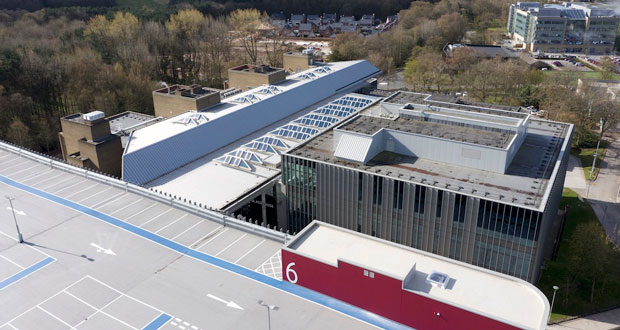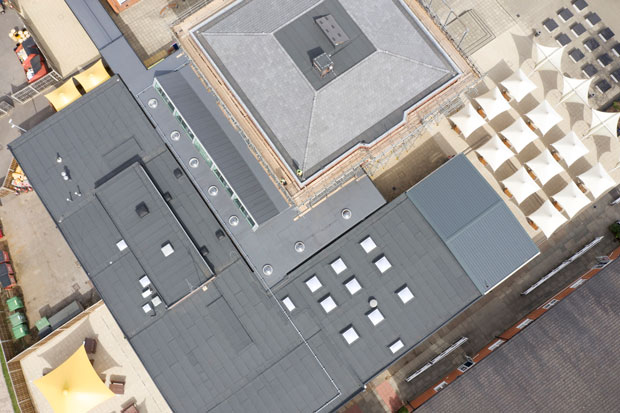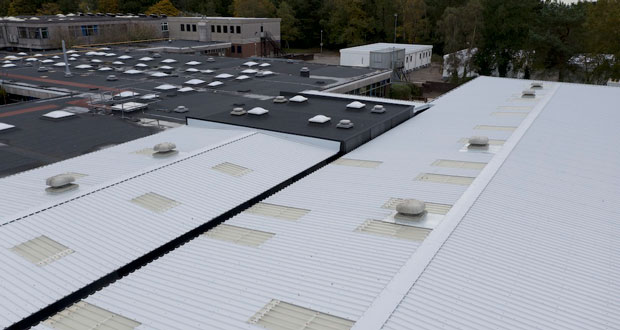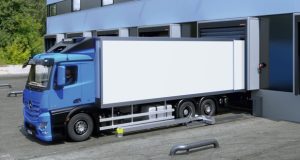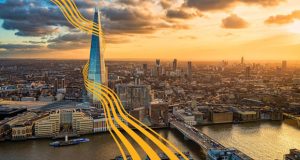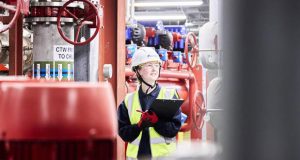Undoubtedly, buildings’ sustainable management and maintenance are at the forefront of many minds, with a significant shift in how facilities managers view their long-term refurbishment and asset management programmes.
With many businesses implementing clear environmental targets for the coming years, early considerations in commercial roofing projects are crucial to addressing environmental challenges and reducing carbon.
By taking more of a holistic approach to the issue, Garland UK Technical Manager Justyn Irons discusses the benefits of understanding the sources of carbon emissions in construction and the sustainable roofing systems that can lower your building’s carbon output.
Embodied Carbon in Roofing
Embodied Carbon quantifies the CO2 emissions from producing building materials and components. These emissions can be found in the energy used to extract, process and transport raw materials, as well as in manufacturing equipment and the buildings which house them. Embodied Carbon also includes the roof’s construction and the deconstruction and disposal of materials at the end of its life.
With roofing projects, the best way to improve the Embodied Carbon output is to increase the length of time the roof system is useable. Justyn adds, “the longer the life cycle of your chosen roofing system, the longer it will maintain its waterproofing and thermal integrity for your building, compared to using short life roofing systems that could need replacing in as little as 10 years.”
Modern buildings are typically designed with a life expectancy of around 60 years, so it is essential to look ahead and choose a roofing solution that utilises products that can get as close to this benchmark as possible. A longer life cycle provides additional benefits, explains Justyn, “roofing systems that are dependable for 40 years or more will reduce your capital expenditure. It allows for better budgetary planning by minimising future refurbishment needs and can even mitigate the need for complete roof replacement in years to come.”
Taking into account the life cycle of the products used on a project, the reduced Embodied Carbon is also an intrinsic part of a BREEAM evaluation, where Life Cycle Costing is utilised to assess the sustainability of a project providing for up to 4 credits.
Operational Carbon in Roofing
Operational Carbon refers to the total carbon emitted from all energy sources to keep a building warm, cool, ventilated, lighted and powered.
Both newbuild and refurbishment roofing works provide a real opportunity to reduce Operation Carbon outputs drastically. By constructing a well-insulated roof (building regulations require that all non-dwelling warm low-slope and pitched roofs must achieve a U-value of 0.18 and 0.16 W/m2K, respectively), the thermal and energy efficiency of the building can be improved. Justyn adds, “not only does high-performance insulation reduce the Operational Carbon output, but it also has the added benefit of reducing the daily operational running costs of the building”.
Further improvements in energy efficiency can be provided through the increased use of rooflights to provide more natural daylight and reduce lighting needs, as well as the installation of Photovoltaic (PV) Solar Panels.
Green roofs not only improve a roof’s thermal performance but capture carbon dioxide through the plants, supporting urban cooling through evapotranspiration. A study by Kurunoma et al. 2018 concluded that an extensive green roof has an approximate carbon payback time of 6.4-15.9 years. In addition, adequately maintained green roofs have an exceptionally long lifespan, further helping to reduce Embodied Carbon.
Whole Life Carbon
Taking both Embodied Carbon and Operational Carbon into account is essential. Together they provide the Whole Life Carbon of a building, which should always be considered to provide the most sustainable choices for roofing projects.
Taking a Whole Life Carbon approach will help guide the big decisions for your roofing assets, which in many cases can be whether to remove a roof and start again or refurbish the existing system. By employing a ‘Cradle to Cradle’ ethos, at the end of a roof’s lifespan, you should endeavour to refurbish where possible, reuse what you can and finally recycle anything that cannot be reused.
The use of innovative materials and construction methods helps to support this goal, and many metal roof systems, for example, are 100% recyclable. Recycled metals can save as much as 90% of the Embodied Carbon compared to processing from metal ore. Justyn adds, “metal cladding systems allow for a new roofing system to be installed whilst leaving the existing roof in place, mitigating waste that has to go to landfill in the process, not to mention saving you additional costs.”

